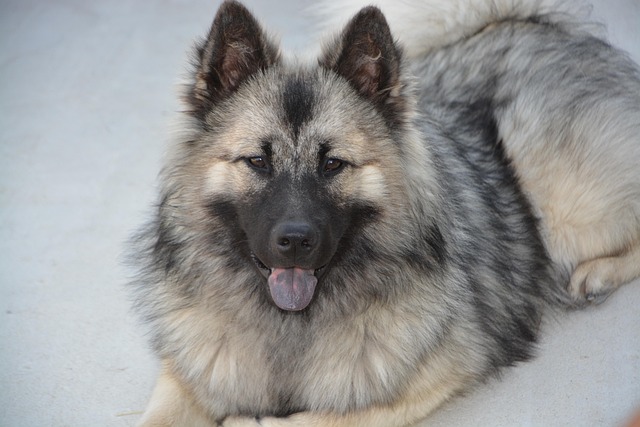
How do i train my dog to be obedient?
Watching your dog dart across the park ignoring your calls isn’t just frustrating—it can put them at risk near busy streets or public spaces.
In the days spent with dogs, their cuteness and loyalty always bring us endless warmth and joy. However, when dogs exhibit aggressive behavior, this beauty is overshadowed. Dogs' aggressive behavior not only poses a threat to the safety of others, but also puts their owners in a dilemma, worrying that their dogs may harm others and feeling sorry for the negative consequences they may face. So, how to correct a dog's aggressive behavior has become an important issue that every dog pooper may need to face.
Dogs' aggressive behavior is not without reason, and there are often complex factors behind it. Fear is one of the common reasons. When dogs are in unfamiliar environments, facing unfamiliar people and things, or encountering sudden loud noises or strong light stimuli, they may exhibit aggressive behavior due to fear, attempting to protect themselves through this method. For example, a dog that has never seen a vacuum cleaner before may bark or even attack the vacuum cleaner when it starts making a loud noise.
Territorial awareness is also an important factor leading to dog attacks. Dogs consider their living areas, such as the home and the surroundings of their kennel, as their own territory. When they feel that their territory has been violated, such as when strangers or unfamiliar animals enter, they may launch attacks to defend their territorial sovereignty. Some dogs will roar wildly and try to bite when they see a deliveryman delivering goods at their doorstep, which is an aggressive behavior triggered by territorial awareness.
Lack of social interaction can also lead to aggressive tendencies in dogs. If dogs do not receive sufficient social exercise and lack contact with different people and animals during their puppy stage, they may exhibit aggression when facing unfamiliar individuals due to not knowing how to respond. For example, a dog that has been kept at home and rarely goes out may directly attack other dogs due to nervousness and unfamiliarity.

In addition, pain and illness may also make dogs irritable and aggressive. When dogs feel unwell, such as suffering from oral diseases, arthritis, etc., any unintentional touch can cause their pain, leading to aggressive behavior. This is actually conveying their pain to their owners.
After understanding the reasons for dogs' aggressive behavior, we can make targeted corrections. Firstly, it is necessary to provide dogs with a safe and stable environment to reduce their sources of fear. When taking a dog to unfamiliar environments, prepare in advance, such as familiarizing the dog with the feeling of a leash, slowly guiding it to adapt to the new environment, and avoiding sudden stimulation.
For dogs with strong territorial awareness, owners should help them correctly understand the concept of territory. When a stranger visits, the owner can first let the dog stay quietly on the side, and then introduce the guest to the dog in a calm attitude, allowing the dog to gradually become familiar with the guest's scent and sound. At the same time, the owner should also stop the dog's aggressive behavior in a timely manner and issue a firm command of "no" to make the dog understand that such behavior is not allowed.
Providing dogs with ample social opportunities is crucial. During the puppy stage, it can be taken to pet parks, pet social activities, and other places to interact with dogs of different breeds and personalities as well as humans. During the social process, the owner should always pay attention to the dog's emotions and behavior. Once signs of attack are detected, they should promptly take the dog away from the scene to avoid escalating conflicts. After the dog's emotions stabilize, try socializing again.
If a dog exhibits aggressive behavior due to physical pain or illness, the owner should promptly take it to a pet hospital for examination and treatment. When the dog's body recovers, aggressive behavior will also decrease accordingly.
In the process of correcting a dog's aggressive behavior, the owner's patience and care are key. Dogs need time to understand and adapt to new behavioral patterns, so don't lose patience or resort to violent means just because of temporary effects. Every training and guidance is an emotional exchange between us and the dog. With the right methods and full love, we can definitely help dogs correct their aggressive behavior and make them become gentle and lovely companions again.
Let us accompany dogs through this stage of behavioral adjustment with love and professional knowledge, making their lives full of sunshine and making our relationship with dogs more harmonious and beautiful. In the future, when we see dogs friendly with others and other animals, we will be pleased to know that our efforts and sacrifices are worth it.

Watching your dog dart across the park ignoring your calls isn’t just frustrating—it can put them at risk near busy streets or public spaces.

New puppy owners often find themselves rushing to clean up accidents before they set in, and that’s where puppy pad training becomes a game-changer.

If you've noticed your dog's waistline disappearing and your veterinarian has mentioned those few extra pounds, your first instinct might be to simply reduce the amount of food in their bowl.

Training a dog to use a designated spot indoors isn’t as daunting as many new owners fear, but it does take consistency and an understanding of your pet’s needs.

That moment of dread on a walk is all too familiar for many new dog owners. You see another dog approaching down the sidewalk of your neighborhood

If the sight of another dog on your neighborhood walk makes your heart sink as your own dog erupts into a frenzy of barking and lunging, you're not alone.